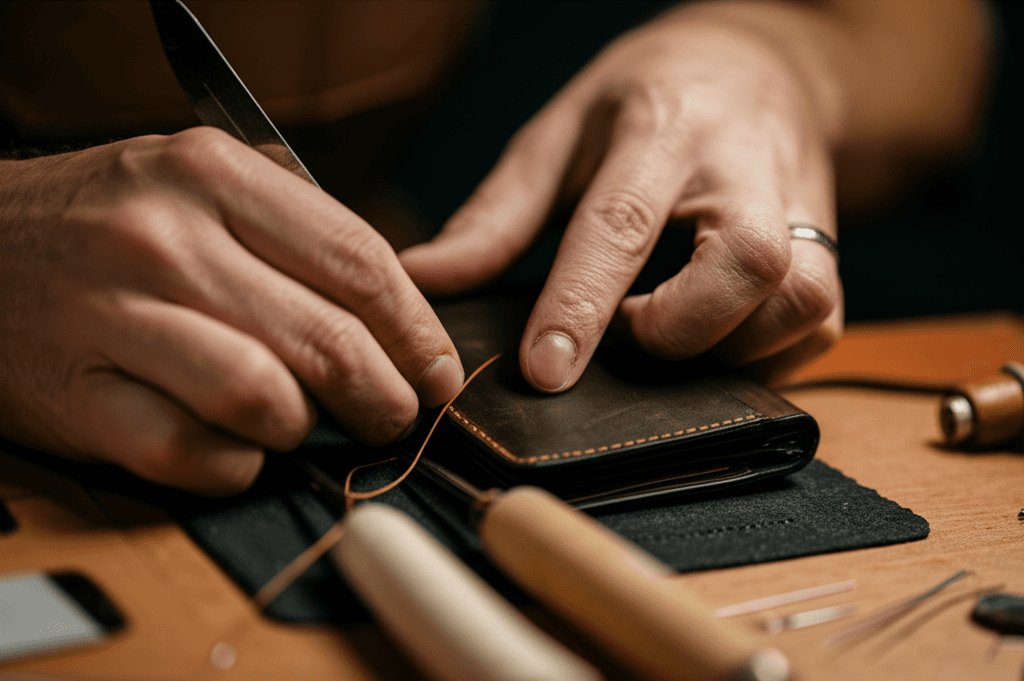
Understanding Different Types of Leather: Complete Guide
Introduction to Leather Types
Understanding different leather types is essential when investing in quality goods. Each type has unique characteristics, benefits, and ideal uses.
Animal Sources
Cowhide
The most common leather type. Durable, versatile, and available in various finishes. Used for bags, shoes, belts, and more.
Goat Leather
Softer and more pliable than cowhide. Lightweight yet durable. Often used for gloves and soft bags.
Sheepskin
Extremely soft and lightweight. Less durable but incredibly comfortable. Popular for jacket linings.
Buffalo Leather
Thicker and more durable than cowhide. Natural grain texture. Excellent for heavy-duty bags and boots.
Processing Categories
Full-Grain Leather
Characteristics:
- Highest quality and most expensive
- Retains natural grain and imperfections
- Develops beautiful patina
- Extremely durable (can last 100+ years)
Best For: High-end bags, shoes, belts, furniture
Top-Grain Leather
Characteristics:
- Second-highest quality
- Top layer sanded to remove imperfections
- More uniform appearance
- Still very durable
Best For: Premium bags, shoes, accessories
Genuine Leather
Characteristics:
- Made from lower layers of hide
- More processed and uniform
- Less expensive but less durable
- Won't develop patina
Best For: Budget-friendly options
Bonded Leather
Characteristics:
- Made from leather scraps bonded together
- Least expensive option
- Can peel or crack over time
Best For: Very budget-conscious purchases (not recommended for longevity)
Specialty Leather Types
Suede
Soft, napped finish from the underside of hide. Requires special care but offers unique texture and appearance.
Nubuck
Similar to suede but from top grain. More durable than suede with a velvety feel.
Patent Leather
Coated with high-gloss finish. Water-resistant and easy to clean. Popular for formal shoes and bags.
Vegetable-Tanned Leather
Tanned using natural materials (bark, leaves). Environmentally friendly. Develops rich patina. More expensive and time-intensive process.
Chrome-Tanned Leather
Tanned using chromium salts. Faster process, more supple, water-resistant. Most common modern tanning method.
How to Identify Quality Leather
- Look at the grain: Natural variations indicate full or top-grain
- Feel the texture: Quality leather feels supple yet firm
- Check the smell: Real leather has a distinct natural smell
- Examine edges: Quality pieces have finished, sealed edges
- Press test: Quality leather wrinkles temporarily then returns to shape
Caring for Different Leather Types
Smooth Leather: Regular conditioning, gentle cleaning
Suede/Nubuck: Special brushes, waterproofing spray, avoid water
Patent Leather: Damp cloth cleaning, avoid harsh chemicals
At Manufact
We work exclusively with premium full-grain and top-grain leather for our handcrafted collection. Visit our boutique in Lebanon to feel the difference quality leather makes.
Conclusion
Understanding leather types helps you make informed purchases and care for your items properly. Always choose the highest quality you can afford - it's an investment that pays off in longevity and beauty.
--- ## Related Articles ### How to Choose the Perfect Leather Bag: Complete Buyer's Guide **Related Topic** • Buying Guides Expert guide to selecting the ideal leather bag for your lifestyle. Learn about leather types, styles, and what to look for when investing in quality.... [Read More →](/blog/how-to-choose-perfect-leather-bag) ### Metallic Leather Accessories Lebanon 2025: Gold & Silver Complete Guide **Related Topic** • Style Guides Discover metallic leather accessories at Manufact Lebanon. Complete guide to prata (silver) and ouro (gold) leather goods. Styling tips for Lebanese f... [Read More →](/blog/metallic-leather-accessories-lebanon-gold-silver-guide) ### Leather Color Psychology 2025: Choosing the Perfect Shade for Your Style **Related Topic** • Style Guides Master the art of choosing leather colors. Complete guide to color psychology, skin tone matching, wardrobe coordination, and Lebanese style preferenc... [Read More →](/blog/leather-color-psychology-choosing-perfect-shade) ### Mediterranean Climate Leather Care: Complete Lebanon Protection Guide 2025 **Related Topic** • Care & Maintenance Protect your leather goods in Lebanon's humid Mediterranean climate. Expert guide to summer heat, winter rain, salt air, and humidity protection for p... [Read More →](/blog/mediterranean-climate-leather-care-lebanon) ### Leather Wedding Accessories Lebanon: Complete Wedding Season Guide 2025 **Related Topic** • Wedding Guides Essential guide to leather wedding accessories for Lebanese brides and grooms. Discover premium leather shoes, bags, belts, and gifts for your Lebanes... [Read More →](/blog/leather-wedding-accessories-lebanese-wedding-guide) ### Leather Wedding Accessories Lebanon 2025: Complete Wedding Season Guide **Related Topic** • Wedding Guides Essential guide to leather wedding accessories for Lebanese weddings. Premium shoes, bags, belts, and gifts for brides, grooms, and wedding parties in... [Read More →](/blog/leather-wedding-accessories-lebanese-wedding-guide)Enjoyed this article?
Visit our boutique at Al-Arz Highway Koura Plaza, Koūsha, Lebanon to experience our handcrafted leather collection in person.
Related Articles

Genuine Leather vs Bonded Leather: The Truth
Genuine Leather vs Bonded Leather: comprehensive comparison for Lebanese buyers. Features, prices, and expert recommendations.

الجلد الأصلي مقابل الجلد الملصق: الحقيقة
Genuine Leather مقابل Bonded Leather: مقارنة شاملة للمشترين اللبنانيين. الميزات والأسعار والتوصيات المتخصصة.

Vegetable-Tanned vs Chrome-Tanned Leather: Sustainability Guide
Vegetable-Tanned vs Chrome-Tanned: comprehensive comparison for Lebanese buyers. Features, prices, and expert recommendations.